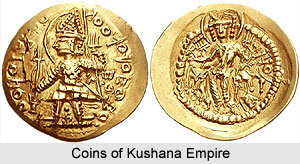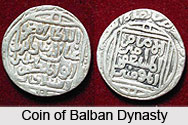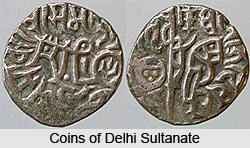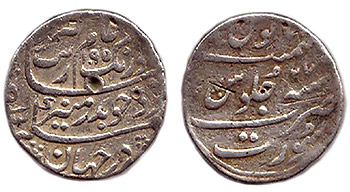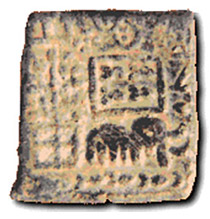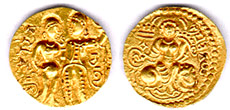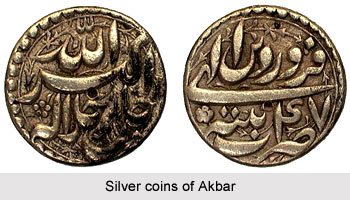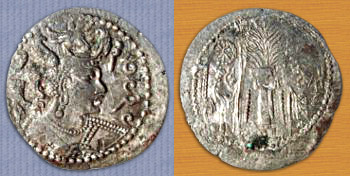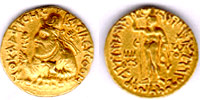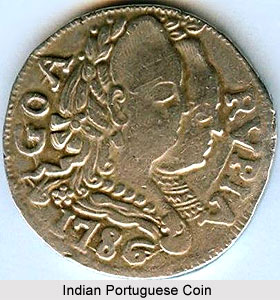 Yusuf Adil Khan, the governor of Bijapur, disassociated himself from the Bahmani capital by degrees and finally declared his independence in 1499 A.D. He ordered that `Khutba` should be read in his name but he did not issue any coin on this occasion in accordance to the Muslim tradition. Even three of his successors also did not issue any coins.
Yusuf Adil Khan, the governor of Bijapur, disassociated himself from the Bahmani capital by degrees and finally declared his independence in 1499 A.D. He ordered that `Khutba` should be read in his name but he did not issue any coin on this occasion in accordance to the Muslim tradition. Even three of his successors also did not issue any coins.
The coinage system of Adil Shahi dynasty began with Ali I during his reigning period in 1557 A.D-1580 A.D. The coins of this dynasty were chiefly made of copper and were issued in three denominations. Apart from these, a few coins were issued of higher weight. The coins of Ali I bore the inscription that read `Ali ibn Abi Talib` on the obverse side and `asadallah al-ghalib` on the reverse side of the coin. The coins of the successor of Ali I, Ibrahim II had `Ibrahim Abla bali` (Ibrahim, the strength of weak) on the obverse and `Ghulam Ali Murtazi` on the reverse side of the coin. Likewise, the rulers of this dynasty included their titles on the coins they issued. The inscriptions they used on their coins represented their devout faith in Shiaism and the Khalifa Ali. Being a bit different from these rulers, Muhammad Adil Shah included an inscription in the form of a Persian couplet that connoted that `the world received beauty and dignity from two Muhammads-one, Muhammad the Apostle and the other, Muhammad the king.)
The gold coins of Adil Shahi Dynasty are rare except a few that were issued by Muhammad Adil Shah. These coins bore the same inscriptions as those on the copper coins. In these series, silver products are almost unknown in the styles of the copper ones. During this time a silver currency of a quite different, indeed of a foreign pattern was issued by the rulers. This was the curious `larin` currency and had originated in the district of Lar at the head of the Persian Gulf. These were most popular among the Arab marine traders. The `larins` were merely a piece of silver wire or slender rod doubled at its middle. As they afford a scanty surface for receiving any inscription, it was not easy to read the inscriptions on them. Most of the Adil Shahi `larins` bore `Sultan Ali Adil Shah` on one side and `Zarb Lari Dangi(or Dabul)san` on the other side of the coin.
The dates on the coins of the Adil Shahi Dynasty were most of the cases not clear but the readable part of the coins stand as a proof that those coins were issued by Ali II.
Some of the `larins` found from the Adil Shahi Dynasty do not clearly testify to the fact that these were at any time current over the whole extent of the Adil Shahi kingdom. Since the territories embraced a large portion of the Konkan littoral zone, it is assumed that those `larins` were struck to meet the local demand for this strange coastal money.
